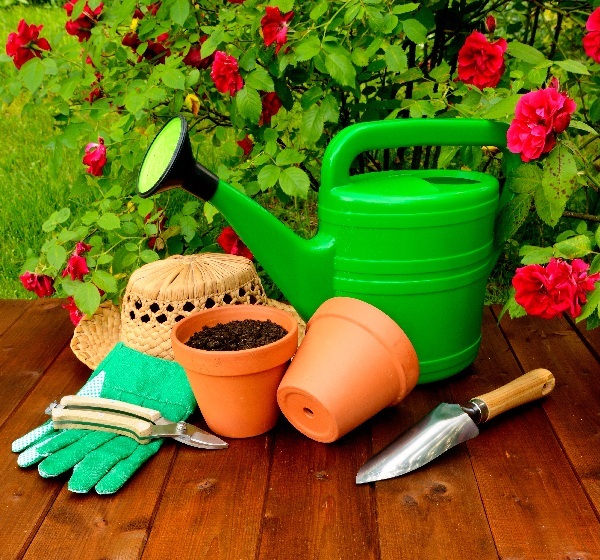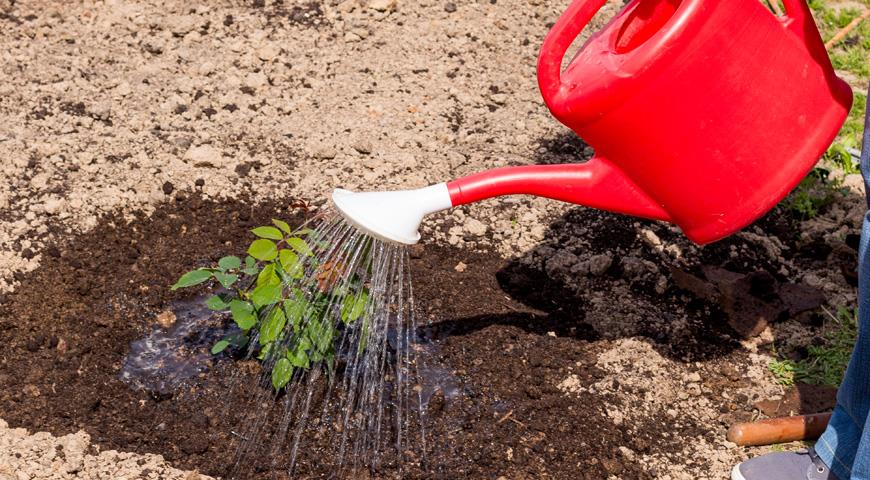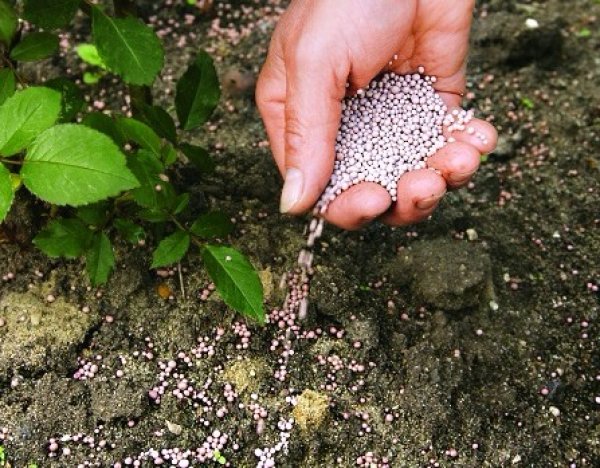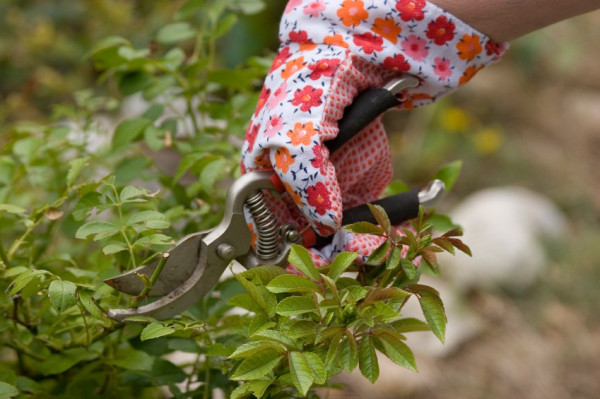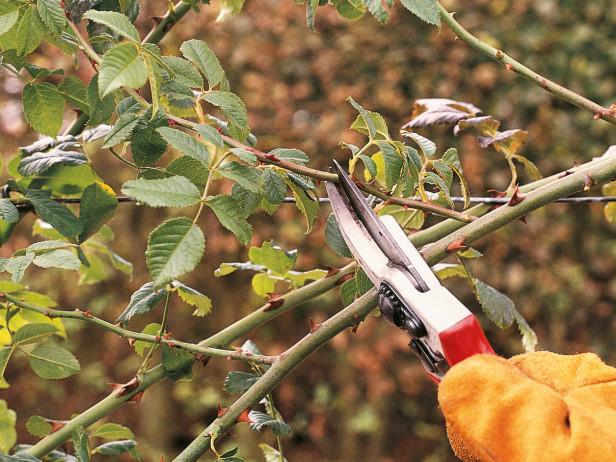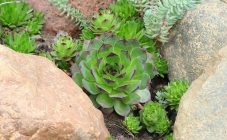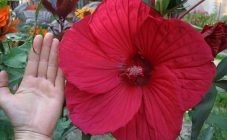Content:
Caring for roses is a rather laborious process. However, subject to certain rules, it is not very difficult to achieve a positive result in growing rose bushes.
General rules for caring for roses
Many gardeners, especially beginners, think they know how to care for roses. Their actions are often limited to occasional fertilizing and weekly watering, especially if the rose bush is outdoors. However, proper care consists of several basic interrelated techniques that even a beginner should know:
- Careful removal of debris from and around the bush will encourage young shoots to appear.
- Frequent sanitary inspection of the shrub will help to identify the appearance of pests in time and save it from death. Fungal diseases can also be detected and prevent the development of the disease in time.
- For the normal development of the plant, the area where it is planted must be pre-drained. Rose does not like too wet soil. Landscaping with roses should be arranged in elevated places.
- The rose will bush normally and develop the root system with proper and timely feeding.
- Planting rose bushes is carried out near the wall of the building with minimal wind.
Rose care
If you take good care of the roses in the garden, then even a plain dacha will look gorgeous. Taking care of flowers continues all year round, and certain manipulations are carried out in each period. Having bought the first bushes, having mastered the care and cultivation, it is impossible to find out everything about roses. Each specific plant, each variety has its own nuances.
Watering roses
All plants need water, and a lot depends on its quality. For watering roses, rainwater is considered the best water, but only in the process of rain. Magnetized drops fall from the sky, which very easily dissolve nutrients in the soil. A special positive effect is observed when roses are treated with solutions prepared in magnetized water. In 2018, many gardeners began to use special magnetic irrigation devices.
Lake and river water contains many microorganisms that are beneficial for the rose, especially if it is planted in a pot.
The water from the well and the well is too cold for the plants: their roots stop absorbing the necessary elements. This can make a young flower sick. Moreover, such water is often salty, hard, and contains impurities.
Regular watering affects the formation of the root system. Frequent small watering promotes the development of surface roots. They are oppressed when loosening, drying out, and suffer from frost.
There are different types of watering with their own pros and cons. The most optimal is drip irrigation, but it is the most expensive. Watering grooves and holes is very troublesome and time-consuming.
Loosening and mulching
Roses in the garden need loosening of the soil, especially after watering. At the same time, moisture evaporates less, weeds are destroyed. Mulching performs a protective function: it protects against overheating in hot summer, fights weeds and pests. Many worms and antagonists settle under the mulch. Gradually mixing with the soil and rotting, mulch becomes an additional fertilizer.
Fertilizing roses
What roses love is fertilizer.Liquid and dry.
A very ideal, balanced and easily digestible fertilizer - rotted humus from bird droppings and manure for a couple of years. It has no smell, so it is comfortable to work with. Based on the condition of the soil, humus is applied every 2-3 years. The dosage is also different: add 3 kg per square meter, but if necessary, the amount can be increased to 10 kg.
It is better to feed the roses in the garden with foliar preparations, so they quickly get into the plant sap. When autumn is cold, the roots of roses practically do not assimilate food and foliar feeding is very helpful.
Of mineral fertilizers, it is better to make a choice in favor of liquid fertilizers, since they have very little ballast and a sufficient amount of trace elements that every rose needs. Homemade roses are especially needed.
For full development, rose bushes need:
- Phosphorus - for root development and quality flowering. The period of application is June - September.
- Potassium - improves the condition of the culture. The period of application is June - October.
- Nitrogen - to build up green mass. The period of application is May - August.
If the preparation of the planting pit was carried out correctly, then in the first year after planting additional feeding will not be required. For young roses, a growth stimulator is added to the irrigation water.
During the growing season, roses are offered 4 main dressings:
- When the buds begin to swell and grow, a quarter-meter groove is made around the bush and Diammophos and Nitrofoska are introduced.
- During the period of bud development, a mixture of potassium, superphosphate and nitrate is introduced.
- At the end of the first flowering, complex fertilizers are applied to the plant.
- In September, roses need potassium magnesium.
Pruning roses
A properly pruned rose bush is distinguished by longevity and lush flowering. A well-fitted pruner should be sharp and clean.
When pruning, take into account the age of the bush, size, group, general condition. After pruning, the rose is processed with iron vitriol. Depending on the season, there are 3 types of pruning, each of which has its own purpose.
Spring pruning
Spring is the main pruning period. This procedure is carried out before the start of sap flow. Its goal is rejuvenation and shrub formation.
When the rose bush is already open and its branches are spread out, the base of the rose should be examined before cutting them. White mold will not harm the flower and will soon come off by itself. Gray bloom is dangerous. If it is found on separate stems, then they are cut off. They also do the same with branches that have brown cracks, which were formed from the rupture of the bark.
A double flower appears on young branches. To make them grow back faster, the tops of the stems are cut over the dormant buds.
Form a bush during leafing. Having cut off the bushes, they should be treated with vitriol or colloidal sulfur.
Summer pruning
Preventive pruning takes place all summer. It allows you to correct mistakes in the spring procedure, to control the quality and quantity of flowering.
The rose always strives to throw out the maximum number of buds. For the full development of the plant, a reasonable number of flowers should be left, and the steel ones should be removed. If wen and blind shoots appear on the bush, they are cut in half.
In the summer, shoots appear that oppress the rose. It is easily distinguished by its light green sharp and small foliage. The wild escape appears most often when:
- bending of roots;
- freezing of culture;
- high rise;
- incompatibility of the rosehip and rose groups.
So that the root shoots no longer bother, pruning is carried out directly at the root.For this procedure, it is dug up.
A rose that begins to bloom for the first time is not yet strong enough for an abundance of buds, so only the central one is left for it.
July is a month of rapid flowering. Do not forget to immediately remove all faded roses.
Autumn pruning
Faded bushes are pruned in autumn so that when winter comes, excess ballast does not squeeze out juices from the plant. In the fall, the bushes are pruned longer than in the spring. Unripe twigs and excess shoots are completely removed.
There are 3 types of trimming:
- weak - leaves the stems at a height of 2/3;
- moderate - cut off half;
- strong - leave a third.
Standard cultures are shortened according to the grafted group:
- tea-hybrid - leave the third part;
- polyanthus, floribunda, bush - leave half;
- groundcover, curb, climbing - cosmetic pruning is carried out.
Tips & Tricks
Working with roses for several years, every gardener gains experience. A novice florist cannot know everything about roses, he often makes mistakes. He will be helped by the advice and observations of experienced rose garden lovers:
- The roses are very responsive to banana peels that contain selenium. It is finely chopped and dropped in the surface area. One peel is enough for each bush.
- Skeletal branches that need to be cut are never cut in half. Only a third or two thirds.
- Once flowering varieties form a lush bloom on last year's growth. They are cut off immediately after flowering so that the growth has time to form by winter.
Working in a garden with rose bushes is not hard, and besides, a person has a rest in his soul. And roses will thank with their flowering for every minute spent with them.
